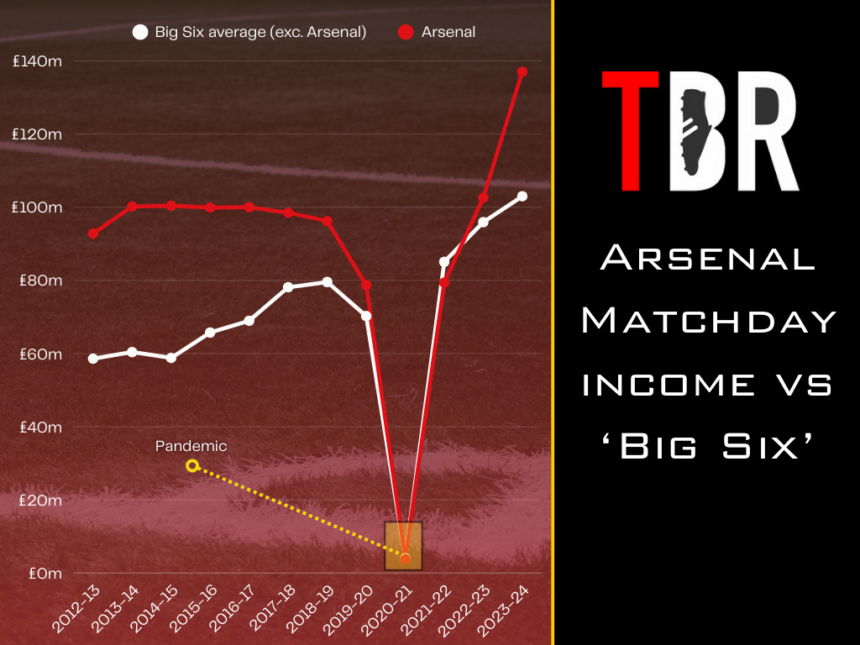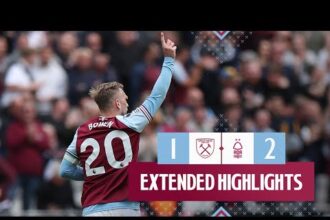The summer of 2026 will mark the 20th anniversary of Arsenal’s move to the Emirates Stadium and 15 years since Stan Kroenke became the club’s majority shareholder.
In that time, success on the pitch has been limited. Four FA Cups, the last coming under Mikel Arteta behind closed doors in 2020, have been the sum total of their achievements in the Stan Kroenke era.
That’s the kind of silverware record that most clubs would trade their soul for of course. The reaction in Newcastle to the League Cup triumph earlier this month illustrates that.
| Competition | Winners | Runners-up |
| Premier League | — | 2015-16, 2022-23, 2023-24 |
| FA Cup | 2013-14, 2014-15, 2016-17, 2019-20 | — |
| League Cup | — | 2006-07, 2010-11, 2017-18 |
| Europa League | — | 2018-19 |
However, it isn’t the level of glory that enticed Arsenal, now one of the richest teams in the world by revenue, to vacate their spiritual home of Highbury for the Emirates Stadium.
Interest payments from the move from N5 to N7 in 2006 has been a millstone for the Gunners ever since, despite the fact that the debt deals were agreed in an era of far more favourable rates.
For years, this meant Arsene Wenger had to operate with a limited budget – and what’s more, this was at a time when the Premier League space race in the transfer and retention market was in full flow.
But while Arsenal’s matchday income has tripled since the Highbury days, their rivals have caught up fast.
In 2021-22, the average matchday income of Tottenham, Chelsea, Liverpool and the two Manchester clubs surpassed Arsenal’s annual takings through the turnstiles for the very first time.
Credit: Adam Williams/TBR Football/GRV Media
Since their return to the Champions League, the Gunners have moved ahead of the average once more, but that won’t hold forever, especially not with several clubs actively looking at revamps.
Liverpool, Tottenham and West Ham now boast bigger capacities than the Emirates, as will Man City once their expansion is complete. Chelsea and Newcastle also want to go to 65,000 in due course.
Meanwhile, Man United, already the biggest matchday income generators in the Premier League could blow everyone else out of the water completely with Old Trafford 2.0.
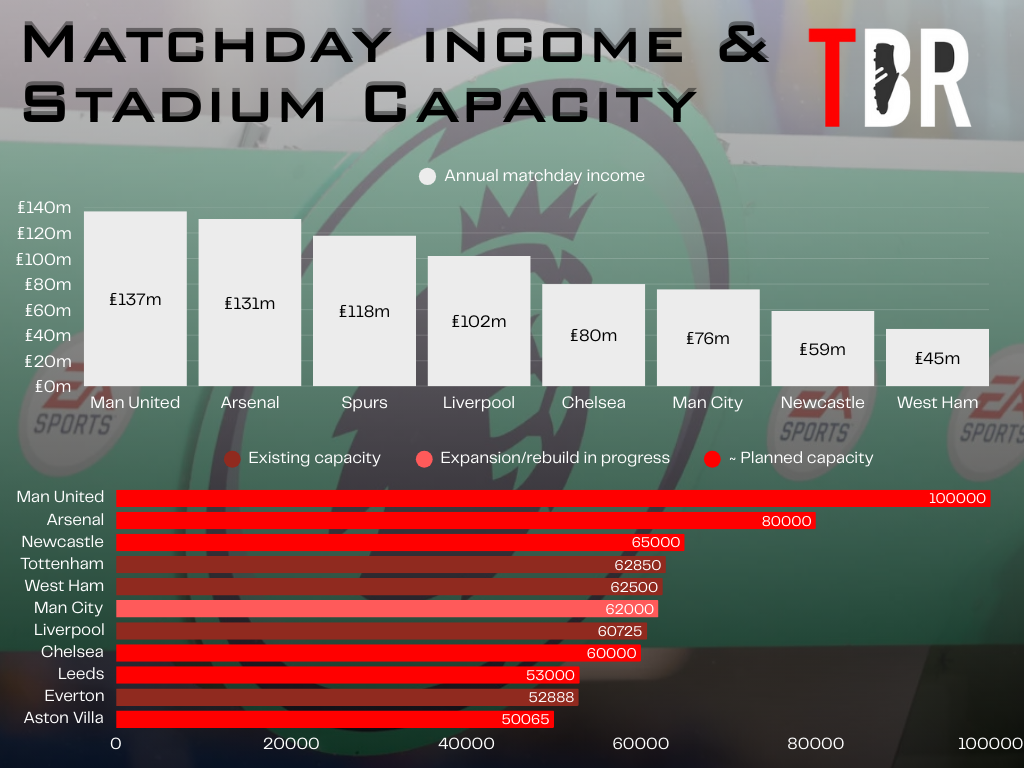
Photo by James Gill/Danehouse/Getty Images
Arsenal need to act, and the Kroenkes – who have overseen some of the most ambitious stadium projects in world sport – are keenly aware of this fact.
Josh Kroenke outlined preliminary plans to expand the Emirates last summer, with more details drip fed to the football finance press in the last few months.
But with any redevelopment likely to cost over £500m and demand huge human resources, how will Arsenal’s ownership balance the club’s short and long-term financial situations?
“It will be extensive and expensive…”
Kieran Maguire, speaking exclusively to TBR Football
The last thing Arsenal fans want is another period of austerity, as was the case for much of Wenger’s era, especially when the consensus is that Arteta needs real financial backing this summer or risk regression.
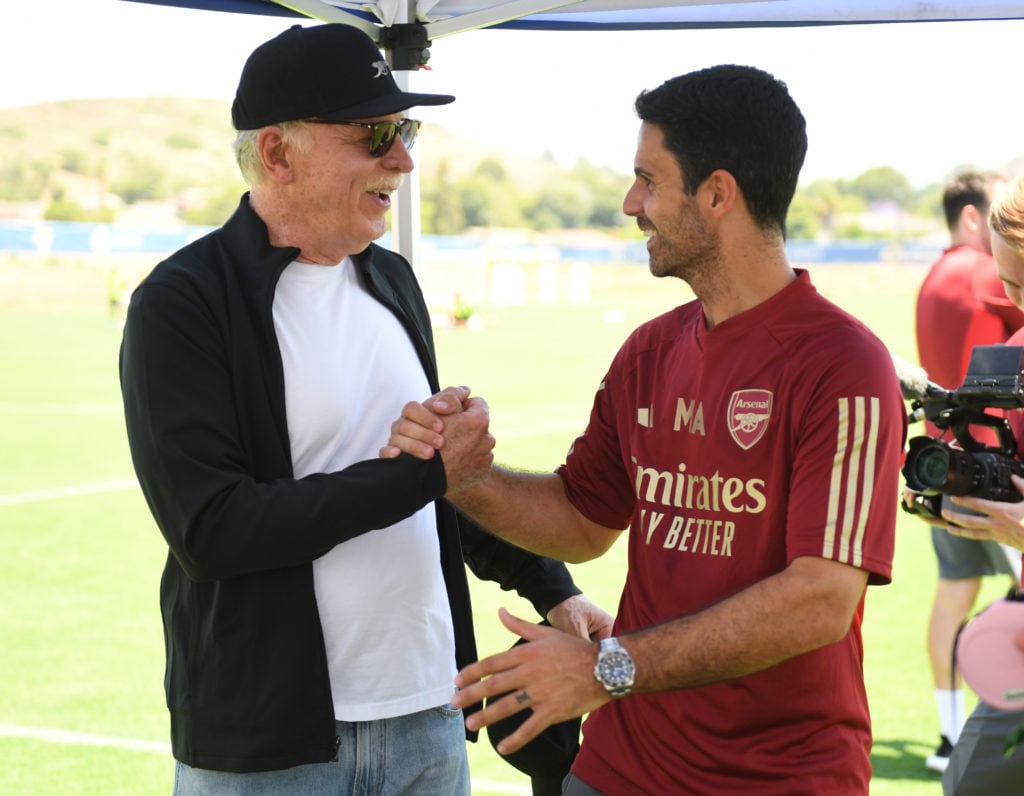
One way Stan Kroenke has historically chosen to finance enormous capital expenditure projects is through a focus on real estate – i.e. residential and commercial property on the stadium site.
Could this be the golden ticket as Arsenal look to expand the the Emirates?
And, with the club seeking to increase capacity to 80,000 at huge expense, how would an accompanying real estate impact their wider financial picture?
TBR Football spoke exclusively to Liverpool University football finance lecturer and well-connected industry insider Kieran Maguire for his take.
- READ MORE: Arsenal have decided to promote 19-year-old youngster to Mikel Arteta’s first-team next season
Arsenal’s Emirates Stadium expansion plan to include huge real estate development?
When Arsenal were granted approval to build a new 12-story block of student flats via subsidiary company Ashburton Trading last year, it may have offered a glimpse of what is in store at the Emirates.
Kroenke’s wealth is wrapped up in real estate and everywhere he has been in the world of sport, there has been a property angle too.
For example, the SoFi Stadium complex, the world’s most expensive and lucrative stadium which was built to house KSE’s Los Angeles Rams NFL franchise, is twice the size of Disney Land.
The footprint of the stadium accounts for just a fraction of that land, with the rest dedicated to retail and residential property connected to Kroenke Sports & Entertainment.
More recently, KSE have been granted approval for a vast residential development on a 64-acre site next door to the Ball Arena in Denver, home to his NBA and NHL teams.
Space at Arsenal is much more limited and, even if there was some sort of compulsory purchase order, London land prices and infrastructure requirements would make a similar project in North London extraordinarily expensive.
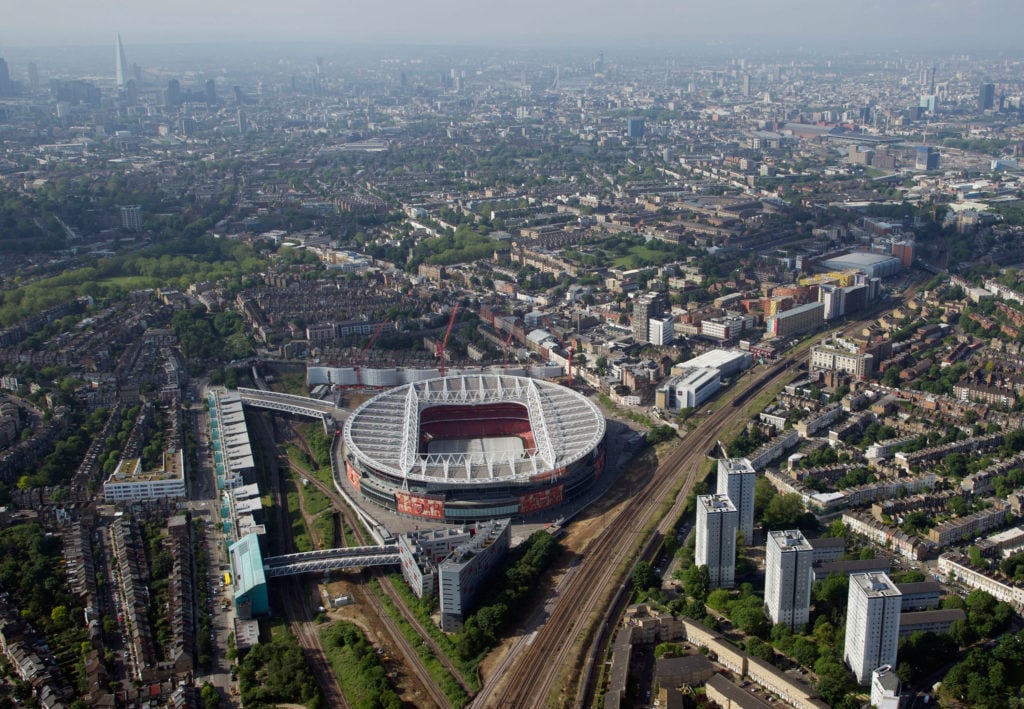
So will this kind of real estate angle work at the Emirates Stadium?
“Using a football club as a lightning rod for a broader real estate development has merits,” says Maguire.
“It attracts attention, though you have to be a little bit cautious because it doesn’t attract attention 365 days a year.
“Prices in London are already high and they have increased in the 12 months or so because of the change in culture when it comes to working from home. That will affect the cost base for Arsenal.
“People who have moved out of London and are moving back in and are having to accept the consequences of being a commuter, so the club will have to take int account rising prices.
“I think it will be an extensive and expensive project at the Emirates whichever way they choose to play it.
“Whether that money will be better aimed towards the real estate aspect or simply expanding the Emirates itself into this mega dome, 80,000-capacity stadium is up for the debate.
“They can sell out that capacity. I don’t think that’s in doubt, but it’s a question of which is going to create better value for them.
“Can they do that and do a land-grab? I.e. buy more land around the stadium to build on. I’m not convinced both of those can operate in parallel.
“Kroenke would have to put an awful lot of money into it for that to materialise. He’s got a huge call to make there.”
- READ MORE: Stan Kroenke has eye on £2bn Arsenal profit as Downing Street steps in over takeover issue
Stan Kroenke’s SoFi Stadium football experiment provides Emirates project hint
Stan Kroenke has never built a football-specific stadium.
Ask supporters of Colorado Rapids, Kroenke’s MLS outfit, what they think of his ownership when it comes to infrastructure and they’ll tell you that their stadium has effectively been a KSE black site in recent years.
| Franchise | Sport | Major Honours in Kroenke era |
| Los Angeles Rams | NFL (American Football) | 1x Super Bowl Champion (2021) |
| Denver Nuggets | NBA (Basketball) | 1x NBA Champions (2023) |
| Colorado Avalanche | NHL (Ice Hockey) | 2x Stanley Cup Champions (2001, 2021–22) |
| Colorado Rapids | MLS (Football) | 1x MLS Cup Champion (2010) |
| Colorado Mammoth | NLL (Lacrosse) | 2x NLL Champions (2022, 2024) |
Dick’s Sporting Goods Park has long needed renovations, but Kroenke Sports & Entertainment appear to have lost interest in domestic American soccer somewhat.
At the SoFi Stadium in LA, however, Kroenke is preparing to host matches at the 2026 World Cup, which – against a backdrop of geopolitical tensions – will be held across the US, Canada and Mexico.
Arsenal have played at the SoFi on a number of occasions, most recently in pre-season against Manchester United last summer.
And, over the international break, the SoFi hosted the Concacaf Nations League finals, where Mexico ultimately emerged victorious.
The commercial approach at these events will give some indication of how Kroenke hopes to proceed at the Emirates once he has put his own stamp on the stadium itself.


